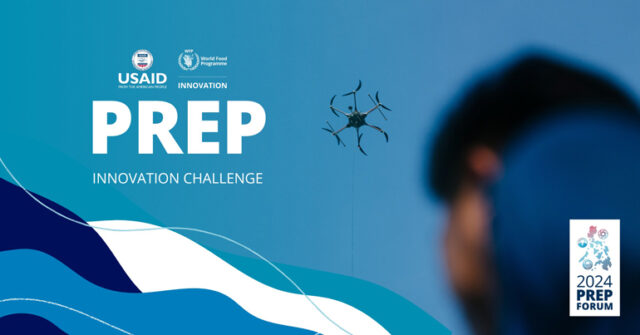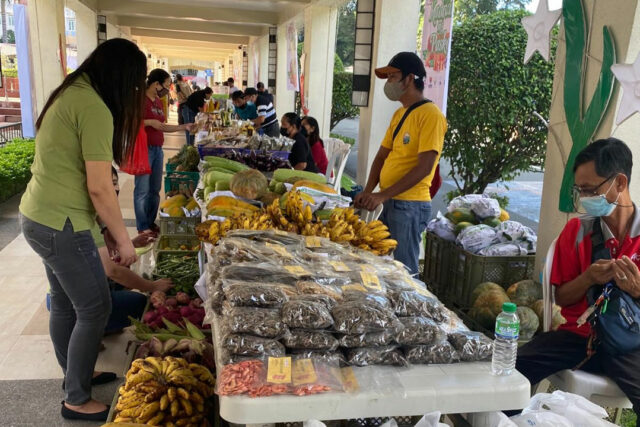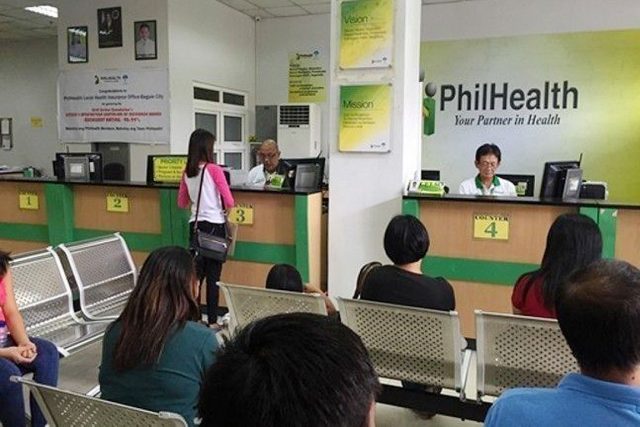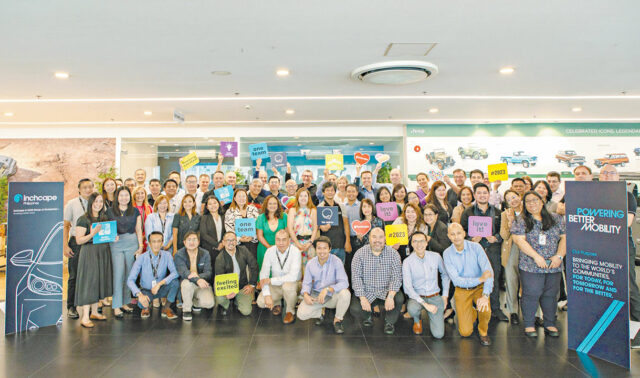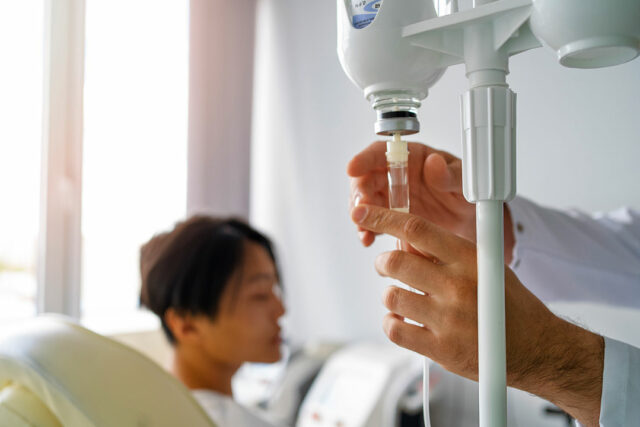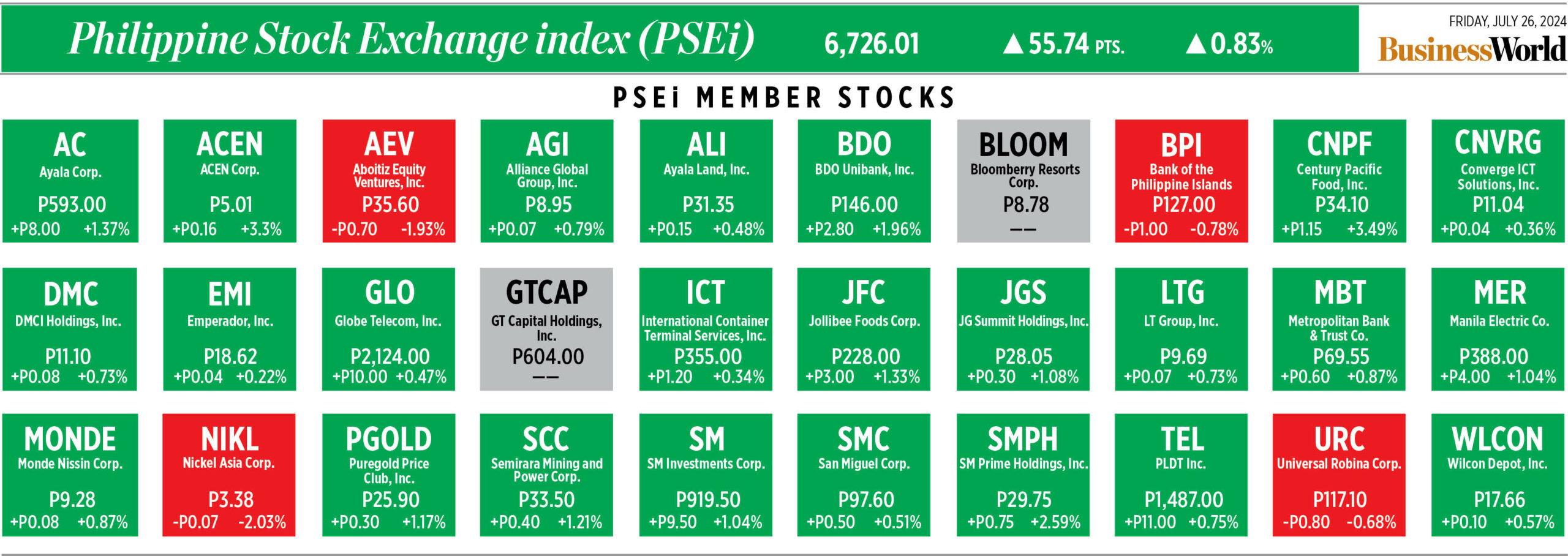The people are angry over the transfer of PhilHealth funds to the National Government. Here is a sample of the furious, fighting words that form public opinion.
Veteran Jarius Bondoc wrote a Philippine Star column (July 17), which he titled “Now they’re stealing our PhilHealth contributions.”
In an interview with Storycon on One News (July 17), Former Finance Undersecretary Cielo Magno said that the provision in the budget law enabling the transfer of funds of government-owned or -controlled corporations (GOCCs) like PhilHealth is “illegal.”
In his July 22 BusinessWorld column (“The P89.9 billion taken from PhilHealth are member contributions, not government subsidies”), Juan A. Perez III asked a rhetorical question: “Pickpockets?”
The July 17 editorial of the Philippine Daily Inquirer was titled: “Immoral fund transfer.”
And on Twitter, economist JC Punongbayan said “nagsimula na ang Marcos admin na mag-extort ng pera mula sa (The Marcos administration has started to extort money from) GOCCs, including PhilHealth and PDIC.” (PDIC stands for the Philippine Deposit Insurance Corp.)
A more sober but still determined call comes from the medical associations and the alliance of health professionals. They have urged the President to “immediately issue a directive to return the entirety of the P89.9 billion in unused funds to PhilHealth.”
Despite the outrage, the administration is digging in. And the Department of Finance (DoF) is the most active in defending the transfer of the PhilHealth funds. It was the DoF that issued the guidelines to implement the controversial provision in the 2024 General Appropriations Act (GAA), leading to the remittance of PhilHealth’s reserve funds to the National Government.
We summarize the DoF’s main arguments, drawn from a statement titled “Mobilizing Unused GOCC Funds for Public Programs,” posted on July 15. And we show how weak the arguments are.
The DoF uses the PhilHealth example, arguing that it and other GOCCs have “billions in unused and idle funds,” which “are being marshalled for projects in health, social services, and infrastructure.” With respect to PhilHealth, the DoF says that the remittances (i.e., what government is taking away) “do not come from their member contributions.” These remittances are the “unutilized National Government subsidies,” and for DoF, “we cannot afford to have excess money sleeping in GOCCs.”
The DoF also takes pride in saying that the remittances from PhilHealth have been used “to pay the 5.04 million claims of COVID pandemic era service allowances of frontliners.”
The DoF likewise assures us that its “move complies with all laws, specifically the General Appropriations Act of 2024.”
The statement of the DoF betrays its ignorance of PhilHealth and the National Health Insurance Program.
PhilHealth is a social health insurance program that pools the resources and risks of the population so that everyone is financially protected from unanticipated, extraordinary, or disruptive expenses arising from sickness, accident, or disability. This kind of financial insurance is about solidarity. My premium or contribution to the fund is not just for my own benefit when I get sick, but it is also for the benefit of others, rich or poor, who get sick. The funds are used not just to cover the medical expenses of the sick but likewise to finance benefits to prevent people from getting sick.
The principles of solidarity and the pooling of resources and risks mean that the program is universal. The whole population is covered. Filipinos above 21 years old are all members of PhilHealth, and they and their dependents are all entitled to PhilHealth benefits. The spectrum of healthcare to be insured by PhilHealth, though constrained by budget or financial resources and the health technology assessment, must be as wide as possible. The goal is to significantly reduce out-of-pocket expenses. Services must be expanding, and the financial benefit package must be increasing.
To be sure, there’s no free lunch. Someone must finance Universal Health Care (UHC) and social insurance. PhilHealth is thus financed through taxes, defined as compulsory contribution to state revenue.
For those with the ability to pay, including minimum wage workers, the contribution takes the form of premiums. Those who pay the premiums, sourced from their own wealth or income, are PhilHealth’s “direct contributors.”
But what about the poor, those without the ability to pay? They also contribute to the pooling of resources and risks by becoming “indirect contributors.” Government provides the indirect contributors the subsidy, so they get enrolled at PhilHealth, become PhilHealth members, and thus claim PhilHealth benefits.
But in essence, the subsidy is still taxpayer’s money, and the poor also pay taxes. Let’s not forget that a substantial part of the subsidy for indirect contributors comes from the earmarking of sin taxes, the burden of which is mainly shouldered by the poor themselves.
To be clear, the government subsidy sourced from the taxpayers becomes the premium of the indirect contributors. This premium is their contribution to the pooling of resources to make the social insurance program work. The pooling of resources from the premiums of both the direct contributors and indirect contributors enables the benefits for all PhilHealth members and dependents.
It follows that the PhilHealth funds are meant to be exclusively used for the benefit of all its members and dependents. The resources, including the excess reserves, cannot be taken away from PhilHealth.
Removing the amount of approximately P90 billion (the premium from the indirect contributors) from the pool of PhilHealth resources destroys the very foundation of the health insurance program and undermines the solidarity of all — the direct and indirect contributors. The removal or transfer of part of the insurance fund impairs the PhilHealth mandate. And it diminishes the benefits for all its members: the Filipino people.
The discussion above is reflected in the Act Instituting Universal Health Care for all Filipinos (Republic Act No. 11223).
Section 8 is about Program Membership. Members consist of the direct contributors and indirect contributors. Under Section 4, the term “indirect contributors” is defined: “Indirect contributors refer to all others not included as direct contributors, as well as their qualified dependents, whose premium [emphasis mine] shall be subsidized by the National Government including those who are subsidized as a result of special laws.”
The law is clear that the subsidy becomes the premium of the indirect contributors. Thus, the DoF is utterly wrong to say that the unused funds are continuing subsidies that government can transfer and use for other purposes. And Juan A. Perez III is spot-on when he said that “The P89.9 billion taken from PhilHealth are member contributions”; they are no longer government subsidies.
In effect, the 2024 GAA and the DoF circular are taking away (or diminishing) the premium and membership of the PhilHealth indirect contributors. Hence, it insults and degrades the poor members of PhilHealth.
But this is also insulting and damaging to the direct contributors. The effect is that the direct contributors now carry the additional burden of supporting the whole PhilHealth membership. (Recently, PhilHealth increased the premium of direct contributors from 4% to 5% and the maximum monthly salary ceiling from P80,000 to P100,000, even as government demanded the transfer of PhilHealth excess reserve funds!) All told, the transfer of PhilHealth reserve funds to the National Government has made every PhilHealth member worse off.
Let’s be clear about this, one more time: The erstwhile subsidy for the indirect contributors becomes their premium. This is treated as an entitlement for the poor. An entitlement cannot be taken away from them, considering that such is an expression of the right to health, which is enshrined in the Constitution. Review the dictionary definition of entitlement: “A government program that guarantees [emphasis supplied] and provides benefits to a particular group.”
Other examples of entitlement are the land reform program and 4Ps (Pantawid Pamilyang Pilipino Program). The government subsidizes the distribution of land for the tiller. Once that subsidy for land is given, government cannot take back the land, lest it be confiscatory. For the 4Ps, once the cash transfers are done, the government cannot reclaim the grants given to the beneficiaries.
But the DoF says it’s better to transfer the PhilHealth’s “idle” or “hibernating” funds to the National Government so they could be used productively.
But this completely ignores the point that PhilHealth funds are for PhilHealth members. The funds must be used to expand the benefits and services and reduce the premiums.
The law is likewise categorical on this. Section 11 of RA 11223 states:
“Reserve Funds: PhilHealth shall set aside a portion of its accumulated revenues not needed to meet the cost of the current year’s expenditures as reserve funds. Provided, that the total amount of reserves shall not exceed a ceiling equivalent to the amount actuarially estimated for two years’ projected Program expenditures: Provided, further, that whenever actual reserves exceed the required ceiling at the end of the fiscal year, the excess of the PhilHealth reserve fund shall be used to increase the program’s benefits and to decrease the amount of members’ contributions.” [Emphasis mine.]
In addition, Section 11 declares that: “No portion of the reserve fund or income thereof shall accrue to the general fund of the National Government or to any of its agencies or instrumentalities, including government-owned or -controlled corporations.”
In truth, increasing the programs benefits can be done immediately. The slogan is “Just do it.” The policies, defined by the law on Universal Health Care, are in place. It is a matter of having the political determination to implement the policies. The bottlenecks relating to registration of members for outpatient benefits, actuarial estimation, and information system are challenging but surmountable.
The excess reserve funds can also be spent immediately. The experts in health financing among the health professionals estimate that for outpatient care alone, an annual budget of P120 billion is needed.
Moreover, the mandate of Philippine universal healthcare is expressed in the globally recognized three dimensions of UHC, namely:
• coverage of the whole population,
•expansion of services or inclusion of other services not covered by existing packages, and,
•continuous reduction of household out-of-pocket expenses (OOP).
Regarding the reduction of OOP, the late Quasi Romualdez envisioned that every Filipino would pay P2 for every P10 on quality healthcare. We are still far from attaining that. In 2022, the household OOP payment stood at 44.61% of total current health expenditure.
The implication of all this is that UHC is a continuous, uninterrupted, and progressive undertaking. Of course, fulfilling this mandate is constrained by resources. But whatever resources are available, they must be used to progressively realize the UHC’s three dimensions. Thus, for UHC and PhilHealth, the concept of “idle” or “hibernating” funds is inapplicable.
Running out of good arguments, the DoF tries to wiggle out of this by invoking the law. It claims that the 2024 GAA allows imposition of “appropriations in excess of what the executive branch has originally proposed.”
But the GAA of 2024 blatantly contradicts and violates the Act Instituting Universal Health Care for all Filipinos. The DoF is using a bad law as a weapon to defeat and knock down another law.
Also abominable is the ploy of the administration to divide and rule, to pit PhilHealth members (well, they are the Filipino people) against others. The DoF is saying that the idle funds from PhilHealth would be used to fund the long-overdue service allowances of health workers or frontliners during the pandemic. For that matter, the DoF is arguing that the “hibernating funds” are better used for worthwhile programs like lands for individual titling, the Comprehensive Automotive Resurgence Strategy, the Nutrition Program, etc.
These programs are worthy of support, but they should be funded not from PhilHealth’s insurance fund but from the budget of the relevant agencies, from the funds that these agencies obtain from the GAA. Shouldn’t the allowances of medical workers be funded from the Department of Health budget? Shouldn’t the nutrition program be funded by the Department of Social Welfare and Development? Shouldn’t the automotive resurgence strategy be funded by the Department of Trade and Industry?
But how come the administration dismissed the appropriations for such worthy programs when the 2024 GAA was passed? Obviously, they were not the government’s priority.
The priority was giving appropriations to the pork insertions of legislators in the budget. In the process, Congress bumped off the good programs. Because of the appropriations for huge pork insertions, previously programmed were tossed out and moved to the unprogrammed appropriations.
In conclusion, we ask: Is this just a matter of the administration being ignorant of what PhilHealth is all about? Or is the administration engaged in deception to cover up other sin?
Filomeno S. Sta. Ana III coordinates the Action for Economic Reforms.
www.aer.ph

